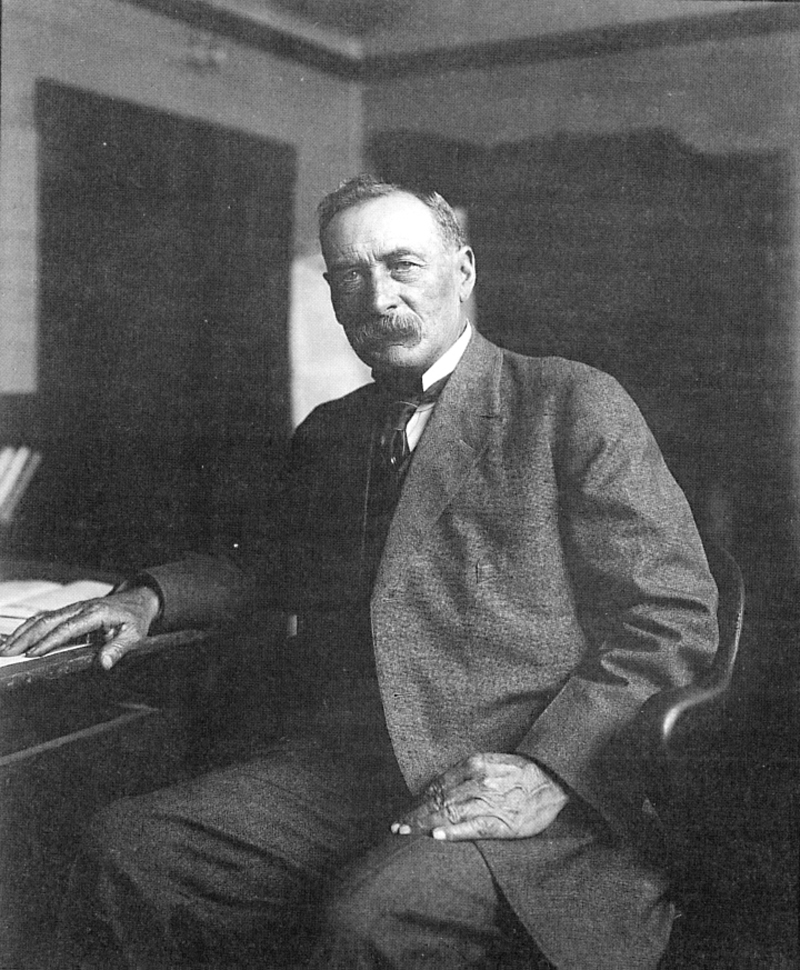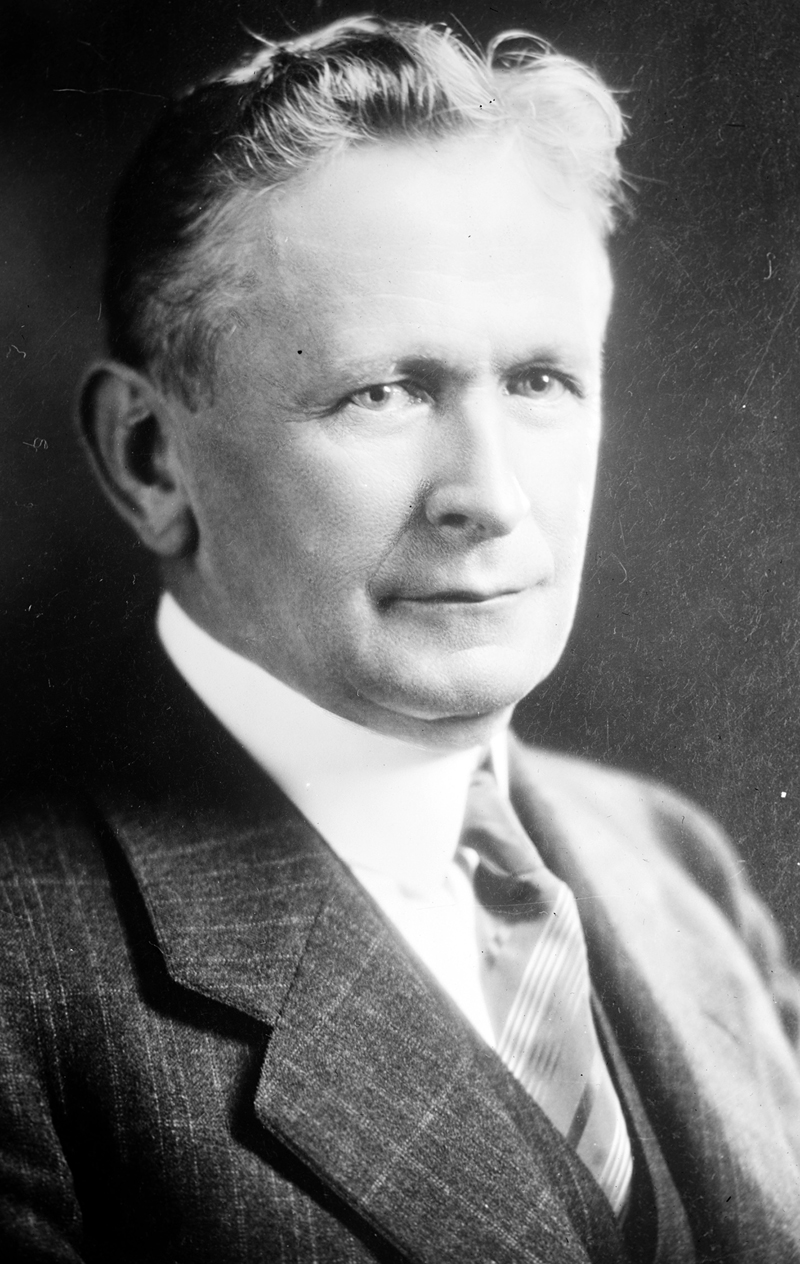|
|
|
St. Francis Dam: Forgotten, With Purpose
L.A. wanted to leave no trace of this blemish on its history. By Peggy Kelly Originally published in Santa Paula Times | April 10, 2009 | ||||
|
In the early part of the 20th Century, people came to believe that after the good Lord created everything else, on the seventh day He didn't rest but instead created William Mulholland. Like Moses, Mulholland was destined to part the waters — or at least separate them from Owens Valley farmers — to beget the precious stream that created Los Angeles. There is no doubt Mulholland was an amazing man, going from Irish immigrant ditch digger at what became the mighty Los Angeles Bureau of Water Works and Supply (now the DWP), to eventually heading the agency. Much like other ambitious Irish of the 1870s who landed firmly upon the golden shores of America, Mulholland was self-taught. After digging holes all day, he backfilled his mind at night, likely shifting side to side to accommodate pains inherent to hard labor, his sponge-like mind soothed by consuming books about engineering. Mulholland's greatest achievement came in 1913, when the Los Angeles-creating aqueduct splashed into being, and for which his name is still revered. His greatest failure was the collapse 15 years later of the St. Francis Dam, which destroyed the Santa Clara River Valley, hundreds of people crushed and drowned by murky waters — and by the murkier greed of Los Angeles land developers, a clique that included the owners of the region's largest newspaper. But Mulholland's aqueduct is what remains uppermost in the mind of history. Honors for The Chief, as he was affectionately known — and a nickname true on many levels — continue to this day. There is Mulholland Drive and a Mulholland Monument and, just for fun, a Mulholland Farm, where the dashing 1930s-40s film heartthrob Errol Flynn created Lotharion havoc in the most notorious house in Hollywood. There was once a Mulholland Dam, although its name was minimized shortly after the March 12, 1928, collapse of the St. Francis when it was subtly rechristened the Hollywood Reservoir. When I attended Birmingham High in Van Nuys, located in the San Fernando Valley — an area of frantic growth once baptized in the waters of the aqueduct — Mulholland Junior High School shared the campus. In 2006, the 150th anniversary of Mulholland's birth was cause for great celebration within the DWP and audible excitement regarding the proposed Mulholland Scattergood Learning Center & Museum, its establishment committee under the enthusiastic leadership of the Association of Water & Power Associates. No doubt the future will continue to bring new honors for the stubborn Chief whose underlings — and, if antidotal history is to be believed, his own family — knew not an iota of doubt ever existed in his lanky frame, and that the great man was never, ever to be questioned. History remains Mulholland's and the water agency's apologist, the sharp edges of unflattering recollections smoothed, the harsh circumstances leading up to the collapse of the St. Francis Dam buried as deep as its escaped waters buried river valley farmland. Mulholland did shoulder the blame, albeit with a somewhat ambiguous statement that at the same time exonerated deliberate wrongdoing and stopped further investigation as dead as the hundreds, or perhaps even 1,000, of disaster dead. There was no doubt Mulholland was a heartbroken and broken man when he resigned from the water agency he begat, but in retrospect, one must wonder why it took him eight months to leave the building, proclamations from a grateful Los Angeles in hand. All in all, the City of Angels just wanted to forget the St. Francis Dam Disaster, retire the bonds taxpayers howled at, and settle the claims — most in a remarkably short time — for lost loved ones, lost property, and lost ways of life. Ultimately, the true story of the St. Francis Disaster itself was lost, but it's not hard to lose something you never really had.
The disaster itself was all but forgotten except for diehard historical types, until more recent history all but solidified Mulholland's legacy with a 1990s study reinforcing that the ancient landslide — a sad state of geological affairs described as impossible to detect at that time — caused the catastrophic collapse. Long-dead Mulholland was again exonerated, a puzzling state for a legacy to be in when no one ever really questioned culpability. After all, then-Gov. C.C. Young's own ordered report on the collapse of the dam — a scant dozen or so pages of rush-to-judgment, rushed to print within weeks of the tragedy — had concluded the geology of the San Francisquito Canyon area was indeed the main culprit. A grand jury that considered the issue, also in a ridiculously short timeframe, agreed, but questioned those in charge who let one man, one engineer, one boss as it were, handle everything under nobody's purview but Mulholland's own. And The Chief was counted on to get the St. Francis Dam built rapidly, cheaply and as secretly as possible. A little more than a year after the collapse, when a foolish young man fell from the monolithic mid-section that remained upright, the 185-foot high concrete column, along with boulder-sized chunks that had been pushed an astonishing distance by the 12-billion-plus gallons of released water, were dynamited and jack-hammered into oblivion. By the time the city of Los Angeles was done, the rubble from the state's second most deadly disaster was indistinguishable surface of San Francisquito Canyon, and that, as they say, was that. Over the years, fragments of the St. Francis Dam, made even tinier in comparison to the magnificent rock formations guarding them, became even more a part of the natural landscape. But remnants of the disaster were picked over for a time. With the walls of the canyons gouged out by the furious flood waters, free gold — ironically known as float — was what people were looking for. The disaster was a blessing in disguise to destitute men of the Great Depression who made the equivalent of 25 cents to 50 cents per hour, shaking out the flecks. The concrete remnants of the dam were easy to miss unless one cared enough to look really hard. Except for macabre souvenir hunters, whose numbers diminished considerably over time as references to the disaster itself were smothered by silence, it seemed that few really did look. That is, until the early 2000s, when a man researching the construction of the Hoover Dam (for his master's thesis in civil engineering at the University of Maryland) read oblique references to the St. Francis Dam Disaster, and his curiosity was piqued. Read about the man's findings in Part 2.
Peggy Kelly of Santa Paula is an award-winning freelance writer, humorist and sought-after Master of Ceremonies. In 2018 she became the owner of the Santa Paula Times newspaper. The working title of Peggy's forthcoming book is "Thornton's Wild Ride! The True, Untold and Unbelievable Story of the Hero of the St. Francis Dam Disaster." |
1) St. Francis Dam: Forgotten, With Purpose 2) Reopening the Books on the St. Francis Dam Disaster 3) St. Francis Dam Construction Records Missing 4) Dam Disaster Whitewash Preserves Mulholland Legend 5) Failing St. Francis: Water Pressure or Political Pressure? • Thornton Edwards, Hero of the St. Francis Dam Disaster
|
The site owner makes no assertions as to ownership of any original copyrights to digitized images. However, these images are intended for Personal or Research use only. Any other kind of use, including but not limited to commercial or scholarly publication in any medium or format, public exhibition, or use online or in a web site, may be subject to additional restrictions including but not limited to the copyrights held by parties other than the site owner. USERS ARE SOLELY RESPONSIBLE for determining the existence of such rights and for obtaining any permissions and/or paying associated fees necessary for the proposed use.

